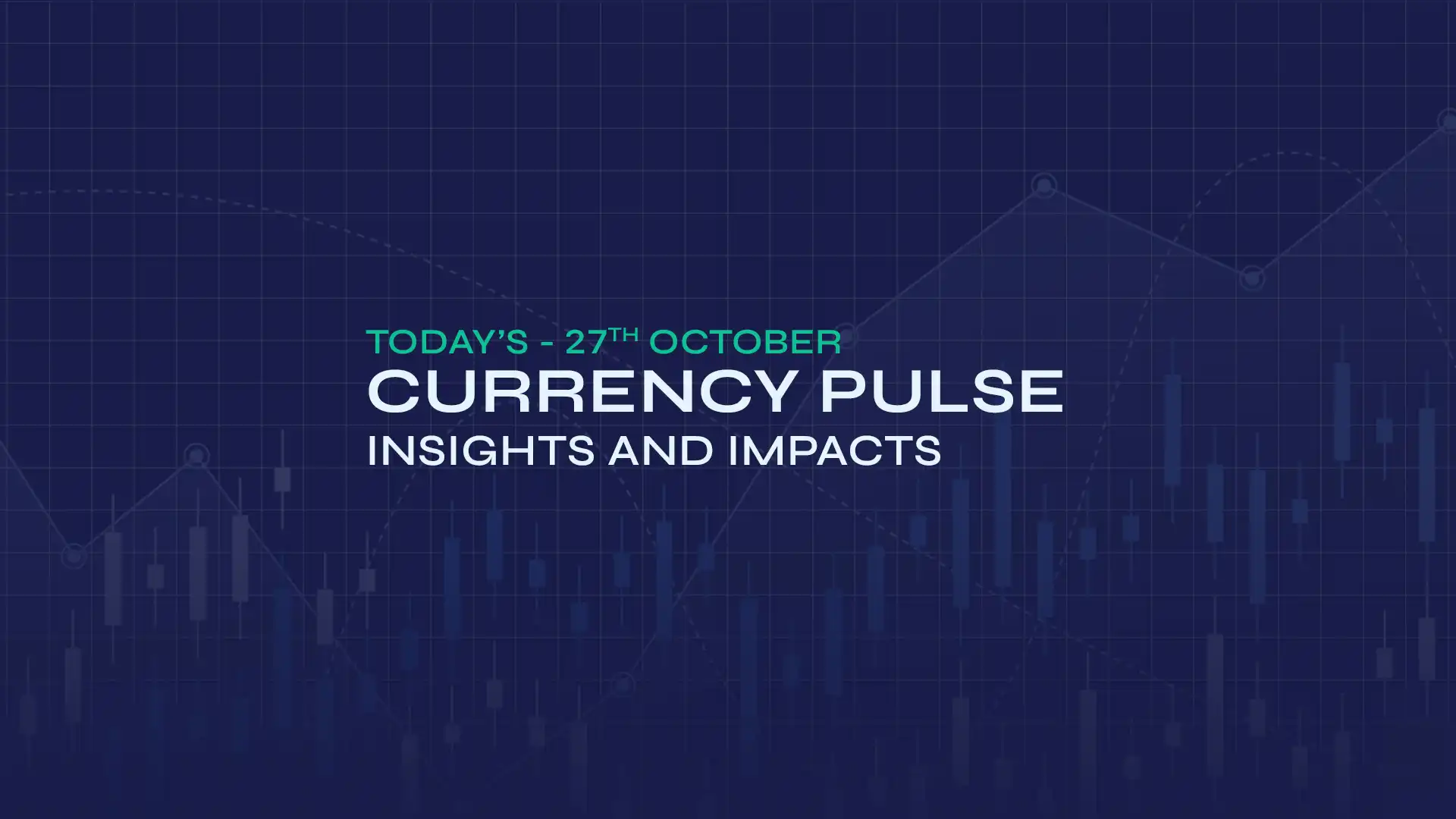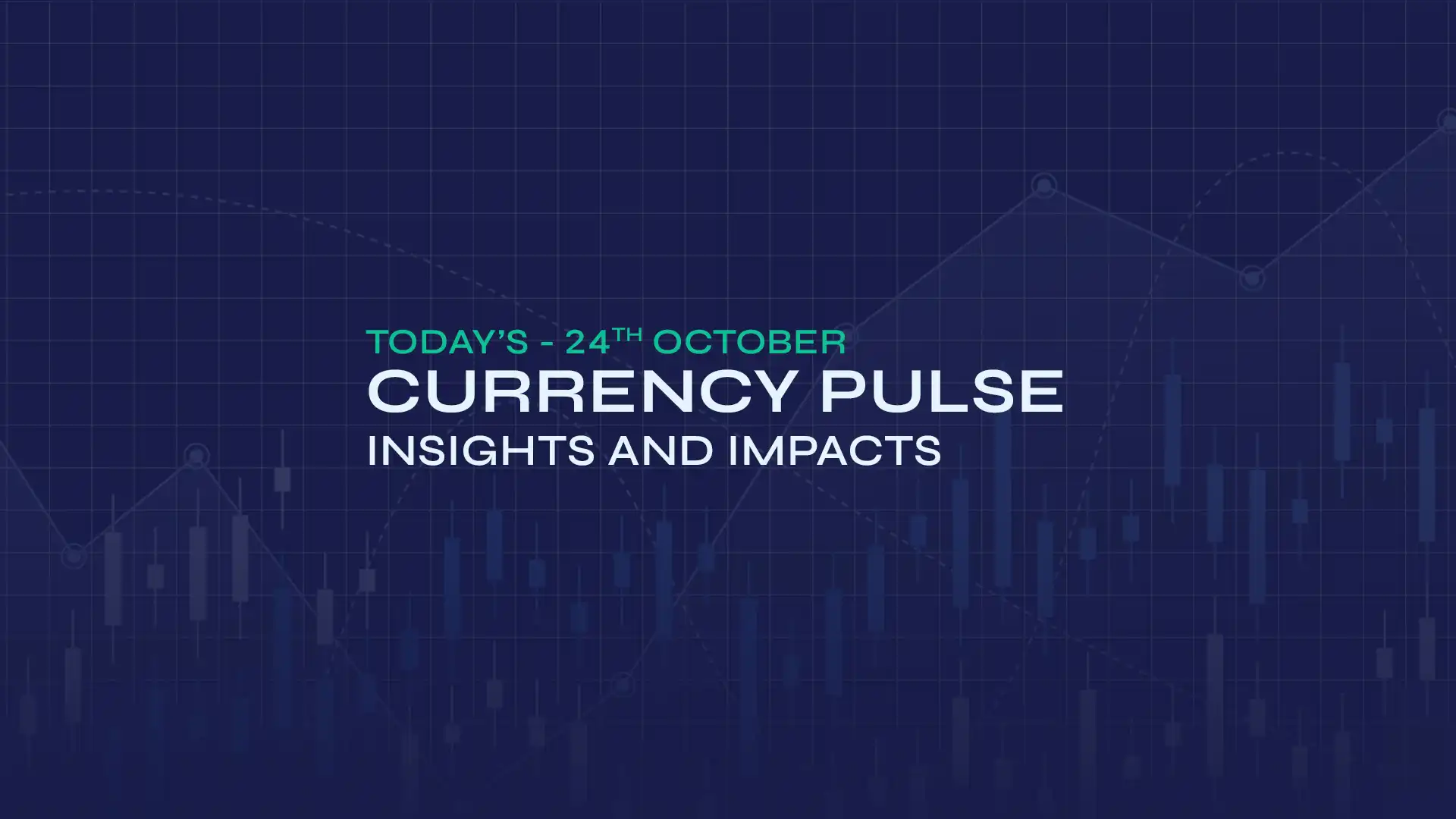The EUR/USD pair traded around 1.1635[1] in Wednesday's Asian session as market sentiment tilted in favour of the US dollar. Optimism around a possible US-China[2] trade breakthrough is believed to have given the greenback a modest boost, as investors take positions tentatively before two central bank meetings this week. The strengthening of the US dollar in terms of risk sentiment is more likely to counterbalance the euro[3], especially in the face of depressed Eurozone growth indicators.
Market participants[4] are currently concerned about the decision of the Federal Reserve in October, in which a reduction of 25-basis-points in the rate is highly expected, and the target range of federal funds will be considered as 3.75% to 4.00%. The press conference by Fed Chair Jerome Powell[5] will be strictly scrutinised by traders to provide them with a clue about the future policy direction. Dovish overtones, indicating a lengthy presence of the easing process or fears about weakening economic outcomes, may limit US dollar[6] performance and provide the EUR/USD pair with short-term assistance. On the other hand, a strong US perception would strengthen the dollar.
Market reports[7] point out that the European central bank (ECB) is predicted to remain at the same level in its monetary policy, which is likely to continue the years of monetary policy stability. The statements of ECB President Christine Lagarde[8] will also be of interest, especially when it comes to the persistence of inflation and the risk of growth. Her comment that policy is in a good place implying that there is not much room within the policy to tighten any further in the short term makes the Euro susceptible to further policy divergence by the US.
Analysts[9] report that moving forward, investors will observe upcoming US macro releases such as GDP growth, first jobless claims, and ISM manufacturing data to verify that the economy is overcoming its challenges. Although a short-term convergence around the 1.1630 level is not impossible, the medium-term trend in EUR/USD will remain tilted downwards, with the relative strength of US policies[10] and ongoing Eurozone growth as an issue.
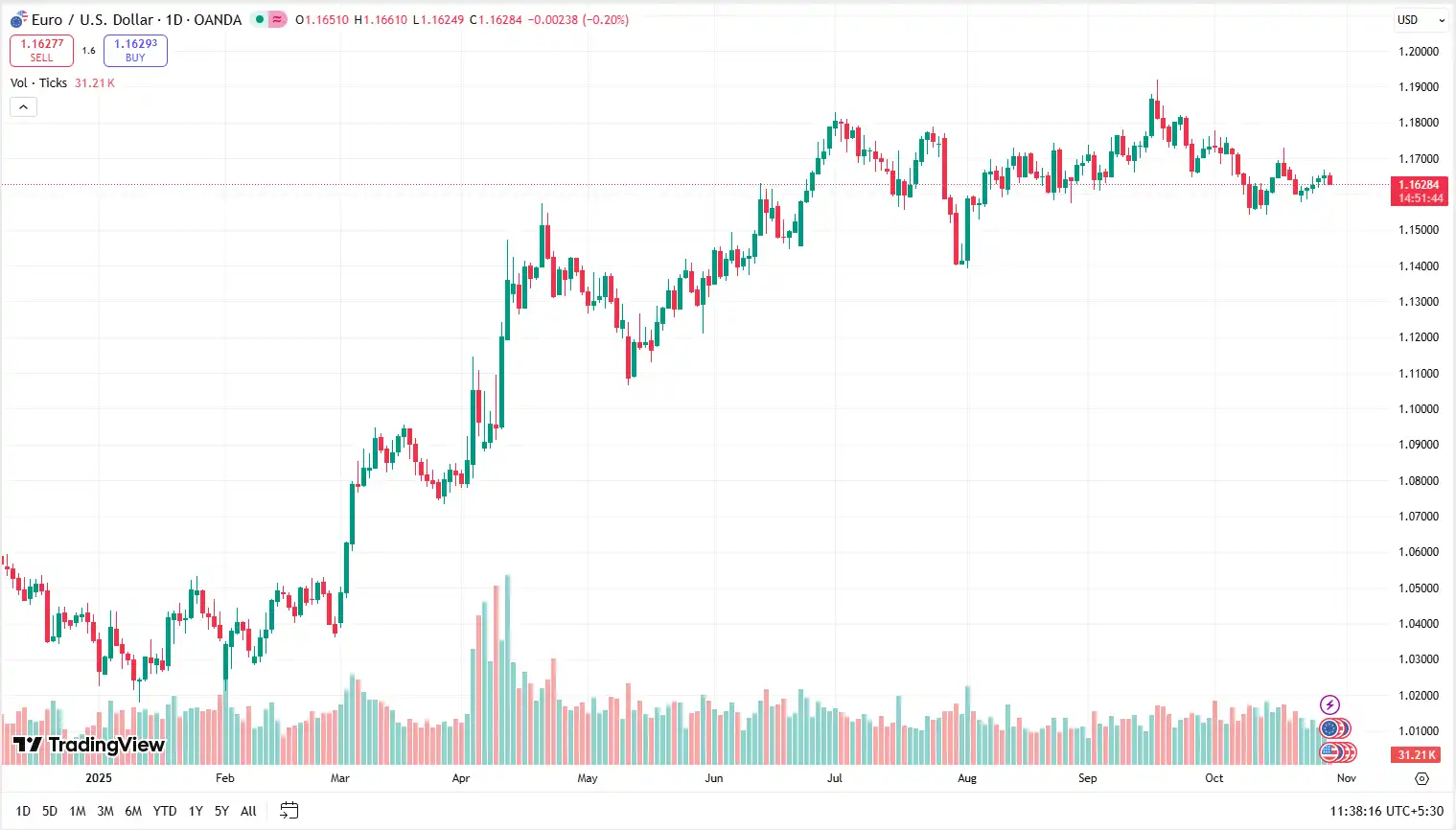
GBP/USD Extends Losses as Rate Cut Bets Grow
The GBP/USD pair extended its decline for the second consecutive session trading near the 1.3250[11] mark in Wednesday's Asian hours. The pound is said to have been under pressure following reports by British Retail Consortium (BRC)[12] which showed that prices of food in the UK dropped at the quickest rate in the last four years and this alternates the expectations that Bank of England (BoE) may start to cut down interest rates as early as December. The improved data on inflation[13] and a price-weaker retail forecast have strengthened the argument of the policy easing, leading to the dealers to put an approximate 68% odds on a rate cut of 25 basis points in the following month.
Market commentators[14] indicate that the economic climate in the UK was also worsened by the fact that the Office of Budget Responsibility is set to reduce its growth in productivity by up to 0.3% points, which would increase the size of the fiscal gap by almost twenty billion pounds. The change has increased the worry before the November budget of Chancellor Rachel Reeves[15], who will be facing a fiscal deficit of up to £35 billion. The developments have burdened investor confidence in the pound that is sensitive to changes in growth and fiscal expectations.
Market reports[16] indicate that on the US side, the Dollar Index is calm before the Fed policy announcement that is scheduled later in the day. It is largely anticipated that the Fed will implement a reduction in the interest rate by 25 basis points bringing the benchmark rate to the 3.75%–4.00% range. The CME FedWatch Tool[17] indicates that markets have already more or less priced in a high probability of another cut which will be made in December.
Analysts[18] suggest that the following US economic data such as the non-farm payrolls on Friday and the ISM manufacturing readings would be closely observed to confirm that the labour market is cooling. Another factor that may restrain the appreciation of the dollar in the near future is weaker US data, which will provide slight support to the GBP/USD[19]. Nonetheless, as UK rate cut bets strengthen, the medium-term bias of the pair is skewed downwards.
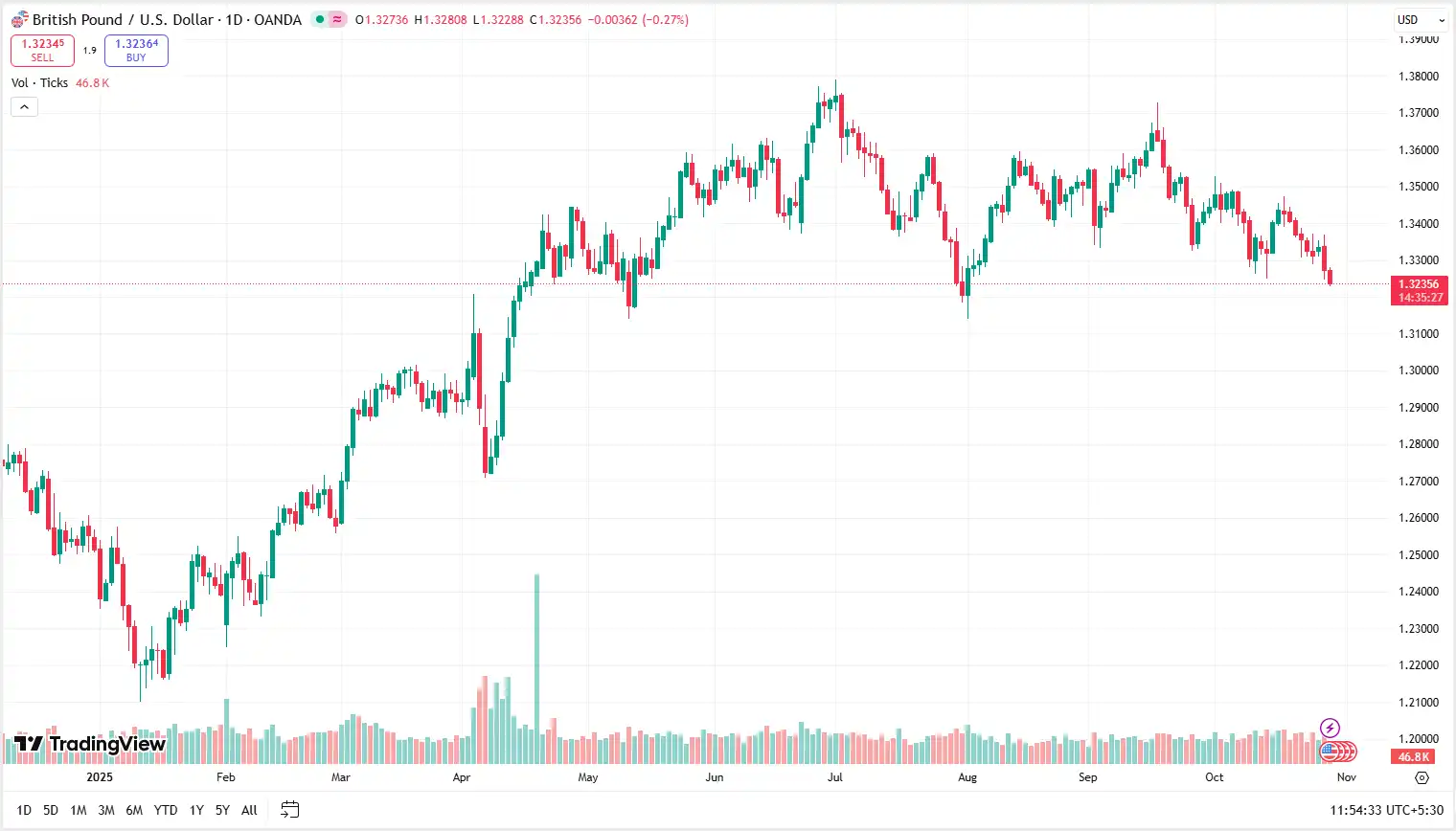
NZD/USD Holds Firm Ahead of Fed Decision
The NZD/USD pair trades near a three-week high in Wednesday's Asian session, consolidating its recent rebound from the 0.5730–0.5725 region. The pair, however, found it difficult to make a decisive move around the 0.5800[20] psychological barrier with traders cautious before the much anticipated Fed policy announcement. The tone underlying, albeit with the slight consolidation, is mildly positive, with the support of the better risk sentiment and indications of the stabilization of the global trade dynamics[21].
Market analysts[22] note that the US dollar is drifting upward as market traders cut their bearish stakes ahead of the next FOMC meeting. The Fed[23] is likely to provide a 25-bps cut in rates, and investors are betting on chances of another 25-bps decline in December. Nevertheless, the greenback has a down side in the perspective of dovish expectations and the risk of US fiscal threats, such as possible disruptions associated with a long-term government shutdown[24]. Such a policy stance on the part of Fed Chair Jerome Powell would drag Treasury yields and limit US dollar demand, thus favouring the NZD/USD pair in the short run.
Market observers[25] note that domestically, the New Zealand dollar is enjoying the support of a view of continuous optimism on trade relations between the US and China that has boosted interest in risk-exposed currencies. This optimistic sentiment could be used to counter the dovish tone and readiness to further policy easing of the Reserve Bank of New Zealand (RBNZ)[26]. Market participants are however, sensitive to possible downsides risks in case global growth momentum slows or commodity demand slackens.
Analysts[27] indicate that with the venture ahead, the focus will be on economic releases in the US such as GDP, core PCE inflation data later this week. The weaker readings may support the anticipation of a long Fed easing cycle and reimpose fresh pressure on the US dollar[28]. NZD/USD has a near-term bullish bias, which is above the 0.5750 support, but further sustained gains above 0.5800 are not certain due to volatility in the wider market.
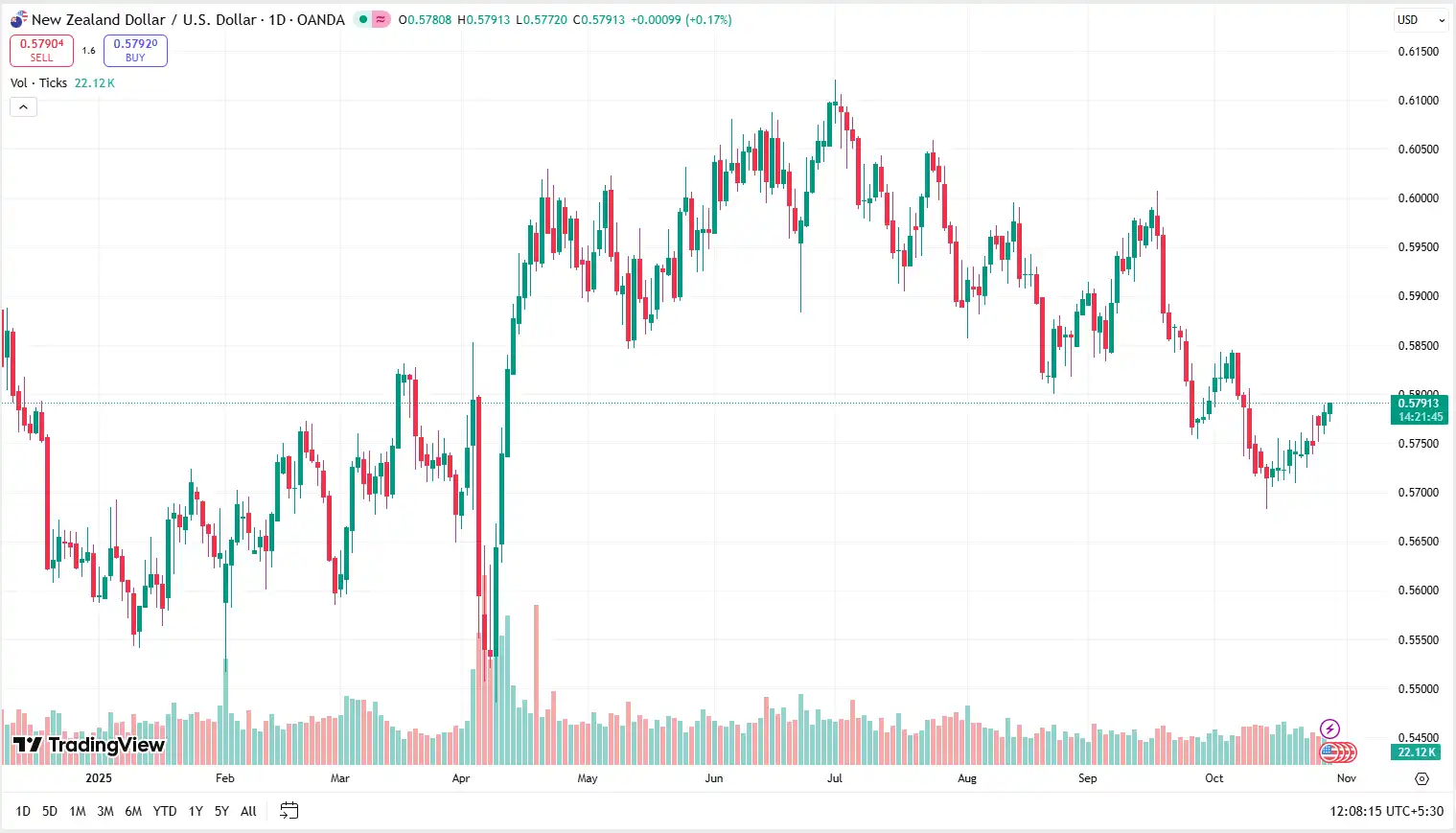
USD/CAD Weakens as Fed Decision Looms
The USD/CAD pair extended its losing streak for the third consecutive session, trading near 1.3940[29] in Wednesday’s Asian session. The pair is believed to be under pressure with the US dollar[30] still weakening ahead of the upcoming policy announcement by the scheduled Fed later today. The market is strongly biased on a rate reduction of 25 basis points, which would reduce the benchmark rate to 3.75%–4.00%[31], the second rate reduction this quarter. The restrained tone in the greenback is indicative of the conservative stance of the investors since markets are awaiting the judgment of Fed Chair Jerome Powell[32] regarding the future direction of the rate cuts.
Market commentators[33] note that the immediate outlook on the US dollar is still weak following mixed US data releases and continued evidence of weakening economic momentum. The recent readings on consumer confidence and durable goods orders have highlighted the fact that the domestic demand[34] has been gradually softening, a fact that has supported the anticipations of further monetary easing. The releases of Q3 GDP[35] and core PCE inflation this week will be keenly followed by traders to get further confirmation of the slowing down of the economy. The negative surprises would further worsen the US dollar losses and prolong the bearish trend of USD/CAD beneath the 1.3900 handle.
Market reports[36] point out that the Bank of Canada (BoC) is also likely to declare its policy option later today with a 25-basis-point reduction in the rate being highly expected. Nonetheless, the comparatively better real yields in Canada[37] and the trending inflationary profile warrant the BoC with an opportunity of adopting a neutral-to-hawkish position after the meeting. Analysts[38] believe that the move might be the beginning of the end of the existing easing cycle in favour of the Canadian dollar in the medium term.
Analysts indicate that although short term US dollar weakness still continues putting pressure on USD/CAD[39], interim support of the pair might lie between 1.3880 and 1.3900. Relative rate differentials and risk sentiment will continue to be important direction determiners in the medium term, and the dovish Fed bias will tend to limit any meaningful recovery in the US dollar[40].
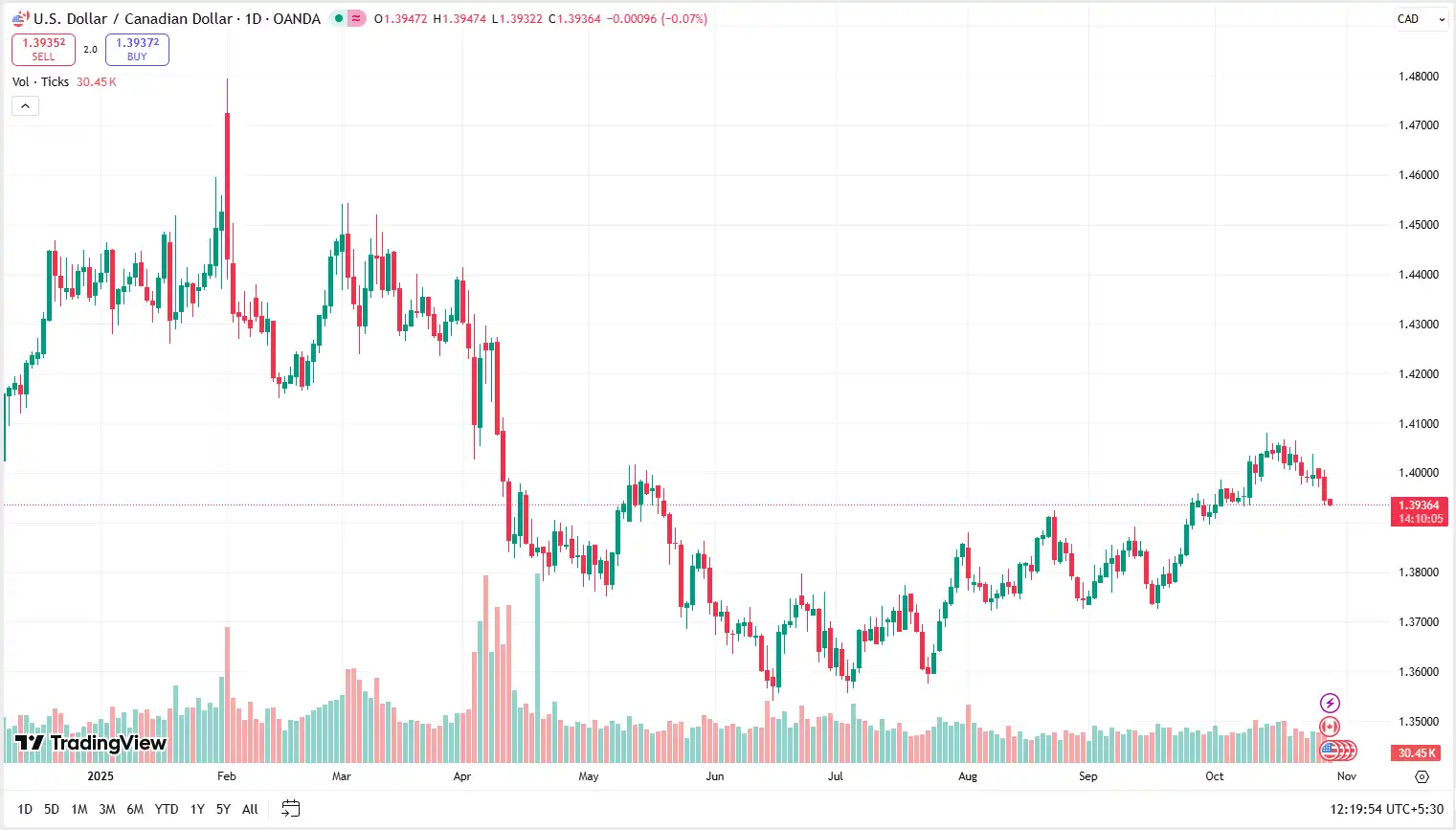
Stay Ahead in the Currency Game
Whether you're a daily FX trader or handle international transactions regularly, our 'Currency Pulse' newsletter delivers the news you need to make more informed decisions. Receive concise updates and in-depth insights directly in your LinkedIn feed.
Subscribe to 'Currency Pulse' now and never miss a beat in the currency markets!
Ready to act on today’s insights? Get a free quote or give us a call on: +44 (0)20 7740 0000 to connect with a dedicated portfolio manager for tailored support.
Important Disclaimer: This blog is for informational purposes only and should not be considered financial advice. Currency Solutions does not take into account the investment objectives, financial situation, or specific needs of any individual readers. We do not endorse or recommend any specific financial strategies, products, or services mentioned in this content. All information is provided “as is” without any representations or warranties, express or implied, regarding its accuracy, completeness, or timeliness.



